#Bwabwata National Park
Video
youtube
Kazile Island Lodge is situated on a private island on the banks of the Kwando River, within the heart of KAZA. Kazile together with its sister lodge Nambwa are the only lodges to be uniquely situated within the Bwabwata National Park. The Lodge offers thirteen Meru tents nestled within a Mangosteen forest. The tents overlook the Kwando River as well as the expansive floodplains between the Island and the famous Horseshoe Bend. Kazile Island is a special paradise that can only be reached by boat. Here, herds of bualo and elephant traverse the wet Zambezi landscape. Sitatunga, an elusive aquatic antelope, are often spotted along the floodplains and marshes.
---------------------------
Die Kazile Island Lodge liegt auf einer privaten Insel am Ufer des Kwando-Flusses im Herzen von KAZA. Kazile ist zusammen mit seiner Schwesterlodge Nambwa die einzige Lodge, die exzeptionell im Bwabwata Nationalpark liegt. Die Lodge bietet dreizehn Meru-Zelte, eingebettet in einen Mangosteen-Wald. Die Zelte überblicken den Fluss Kwando sowie die weitläufigen Überschwemmungsgebiete zwischen der Insel und dem berühmten Horseshoe Bend. Kazile Island ist ein besonderes Paradies, das nur mit dem Boot zu erreichen ist. Hier durchziehen Büffel- und Elefantenherden die feuchte Sambesi-Landschaft. Sitatunga, eine schwer fassbare Wasserantilope, wird oft entlang der Auen und Sümpfe gesichtet.
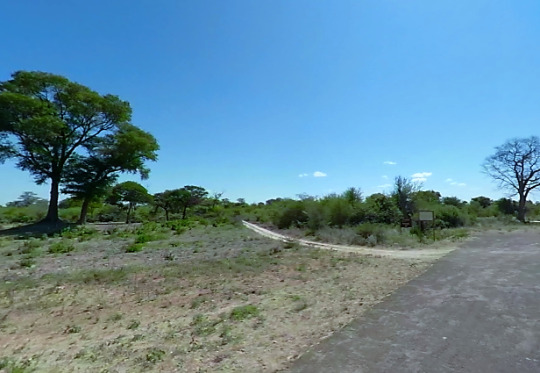
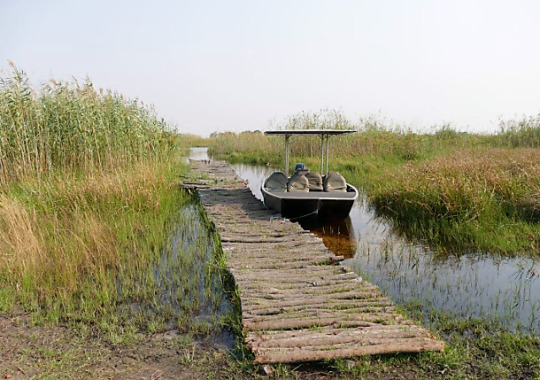
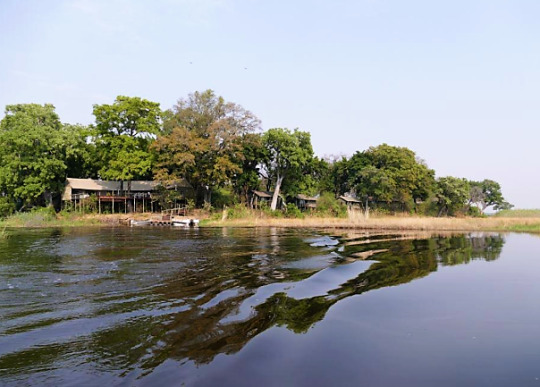



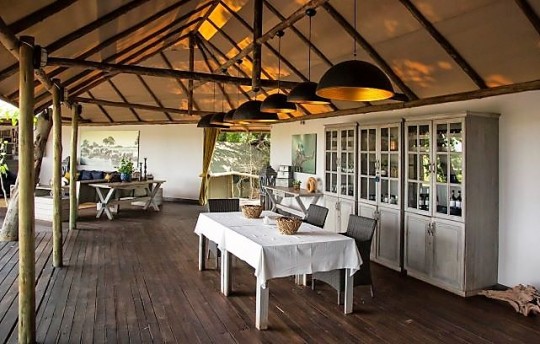

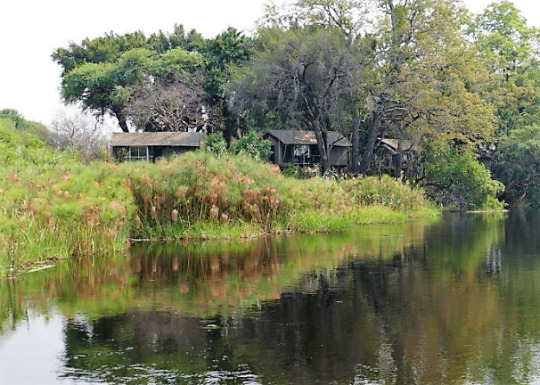

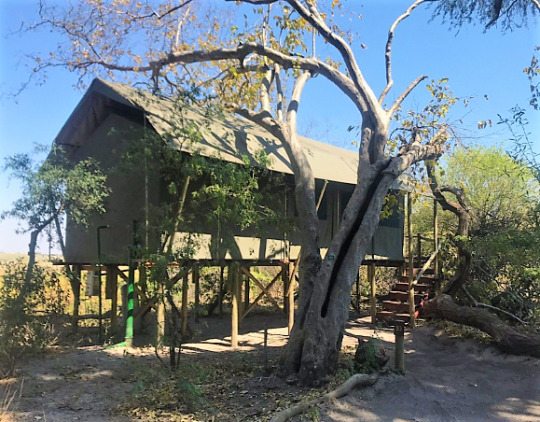
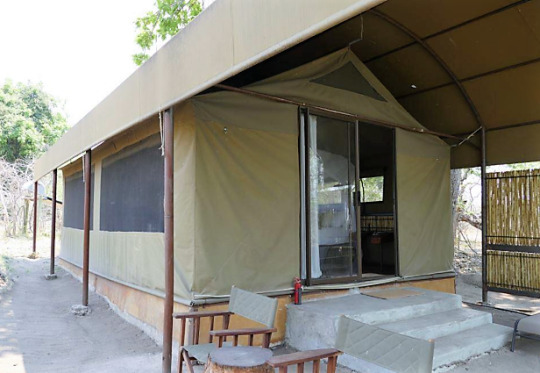


2 notes
·
View notes
Text
Bwabwata National Park - Namibia - Morning Safari










0 notes
Text
Namibia, Botswana und ein kleines Eck Simbabwe/Sambia – III
Je näher wir dem Caprivizipfel – einer zipfelförmigen Ausbuchtung im Nordosten des Staatsgebiets von Namibia – kamen, desto grüner wurde die Landschaft. In diesem dünnen Streifen - welcher größtenteils von Angola im Norden und Botswana im Süden begrenzt wird - besuchten wir zunächst den Bwabwata National Park. Dieser war zu unserer Besuchszeit nahezu menschenleer. Auch hier konnten wir einige Tiere wie Affen, Giraffen und Zebras beobachten. Highlight war sicher unser Camp leicht außerhalb des Parkes – das Ngepi Camp. Dies war nicht nur sehr schick dekoriert und eingerichtet, sondern von diesem war es auch ohne Probleme möglich unzählige Flusspferde zu beobachten.








Am östlichen Ende des Caprivizipfels überquerten wir die Grenze nach Botswana und fuhren nach Kasane ins Senyati Safari Camp. Auch dieses Camp war für sich gesehen schon ein Highlight, da es über einen Bunker verfügt, durch welchen wir relativ nah an ein Wasserloch kamen. Aus wirklich nächster Nähe beobachteten wir Elefanten und andere Tiere beim Trinken und sahen beispielsweise auch einen Kampf zwischen zwei Elefanten. Allgemein war in dieser Landesecke einiges an freilebenden Tieren geboten. Elefanten grasten so zum Beispiel wie selbstverständlich neben größeren Straßen.
Ich unternahm am zweiten Abend eine kleine Joggingrunde und sah dabei z.B. Giraffen welche von mir ganz überrascht wirkten. Am Abend klopfte die Besitzerin des Camps auf meine Schultern und fragte mich, ob ich es war der draußen gejoggt ist? Dies hätte nach ihrer Aussage mein schnellster und mit etwas Pech auch letzter Lauf sein können, da in diesem Gebiet z.B. auch Löwen leben. Wenn ich das Glück nicht auf meiner Seite gehabt hätte, würdet ihr diese Zeilen jetzt aber nicht mehr lesen können. So war es eine wirklich besondere und schöne Joggingrunde entlang der simbabwischen Grenze.
Ein Tagesausflug und unser Hauptgrund für den Besuch diesen Gebietes waren die Victoria Falls. Da diese zwischen Simbabwe und Sambia liegen und hier jeweils die Einreise mit unserem Auto etwas aufwändiger geworden wäre, sind mir mit einer geführten Tagestour von unserem Camp zu den rund 50 km entfernten Wasserfällen auf die simbabwische Seite gefahren. Unterwegs liefen auch wieder zahlreiche Giraffen und antilopenartige Tiere über die Straße. Dieser Tagesausflug war nicht unbedingt günstig, da beispielsweise schon allein das Visum für Simbabwe 30 US-Dollar gekostet hat. Hier wurde sogar noch ein Impfnachweis für Covid19 verlangt, allerdings hat schon der sporadische kurze Blick auf meine CovPass App gereicht, wo der Beamte mit seinem 2 Sekundenblick mit Sicherheit nicht wirklich etwas gelesen hat.
Der Eintritt in den Nationalpark der Victoria Falls auf der simbabwischen Seite kostete auch schon 30 US-Dollar (seit Januar 2023 wohl sogar 50 US-Dollar). Es hat sich aber auf jeden Fall gelohnt. Die Wasserfälle sind wirklich beeindruckend und gehören für mich - zusammen mit den Iguazú-Wasserfällen in Südamerika - zu den beeindruckendsten Wasserfällen die ich je gesehen habe. In dieser Landesecke ist Simbabwe auch sehr sicher – dafür aber auch nicht günstig und sehr touristisch. In vielen anderen Landesteilen schaut dies wohl anders aus. Nachdem was ich gelesen habe, ist Simbabwe wohl vergleichsweise in wirklich armes Land auch wenn es hier nicht so gewirkt hat.
















Auch in Botswana gibt es noch unzählige Nationalparks, welche mit Sicherheit eine Reise wert sind. Wir waren am Ende der Reise dann doch etwas von größeren Safaris gesättigt und haben uns nach etwas hin- und herüberlegen entschieden, an zwei längeren Fahrtagen direkt nach Windhoek zu fahren und kein zeitlich aufwändigeres Off-Road Abenteuer kurz vor Abflug zu riskieren.
Das einzige Ärgernis auf dieser Strecke war, das in fast jedem Dorf die Polizei mit Laser die Geschwindigkeit gemessen hat. Teilweise war es nicht mehr wirklich ersichtlich, dass wir uns im Ortsgebiet befunden haben. So mussten wir leider doch zweimal Strafe für zu schnelles Fahren direkt vor Ort mit Kreditkarte löhnen.
Für Windhoek selbst würden aus meiner Sicht ehrlich gesagt drei Stunden zum Sightseeing reichen. Es ist zwar mit Abstand die größte Stadt weit und breit, aber so ein richtig tolles Stadtflair hat sie auf mich nicht ausgestrahlt. Wir haben dort zum Ausklang aber auch noch etwas am Pool unseres Camps gelegen und somit die letzten zwei Tage der Reise entspannter ausklingen lassen. Am Tag des Abfluges sind wir zudem in das sehr nahegelegene, aber kleine Daan Viljoen Game Reserve (ein privat betriebener kleiner Nationalpark) gefahren. Dort sahen wir noch einmal Giraffen und hatten einen guten Blick auf Windhoek und dessen Umgebung.
Mit der Abgabe unseres treuen Gefährden nach 6310 km endete die Reise in Windhoek. Von der Autovermietung wurden wir dann wieder zu dem vergleichsweise wirklich kleinen provinziell wirkenden Flughafen fast eine Stunde außerhalb Windhoeks gefahren.
Es muss einem bewusst sein, dass Namibia nicht gerade für Badeurlaub steht und dass ein Großteil der Landschaft sehr karg ist. Mit dies im Hinterkopf kann ich Namibia wirklich jedem uneingeschränkt ans Herz legen. Sehr nette Menschen, faszinierende größtenteils menschenleere Landschaften und eine lebendige Tierwelt – all das bietet Namibia. Es ist allerdings kein günstiges Reiseland. Auch wenn beispielsweise der Liter Diesel nur ca. 1,3 € kostet, so kosten viele touristische Dinge teilweise deutlich mehr als wir es vermutet hätten. Auch beim Einkaufen im Supermarkt bekamen wir weniger Auswahl zu höheren Preisen als wir es in Deutschland gewohnt sind.
#namibia#botswana#simbabwe#sambia#victoria falls#kasane#Caprivizipfel#windhoek#Bwabwata National Park#Viljoen Game Reserve#Flusspferde
1 note
·
View note
Text
Bin heute über die Grenze und somit in Botswana. Kurz vor der Grenze ist der Bwabwata National Park, wo ich richtig viele Kudu, Zebras und Warzenschweine gesehen habe. Bin in Botswana dann bis Gumare gefahren, bis es angefangen hat zu regnen und ich entschied hier zu schlafen.
Seit langem bin ich auch endlich wieder Dirt-Roads gefahren und selbst wenn die Straßen hier geteert sind, sind überall Löcher… welche teils auch geflickt wurden.






2 notes
·
View notes
Text
On this day in Wikipedia: Wednesday, 29th November
Welcome, velkommen, bienvenue, dobrodošli 🤗
What does @Wikipedia say about 29th November through the years 🏛️📜🗓️?
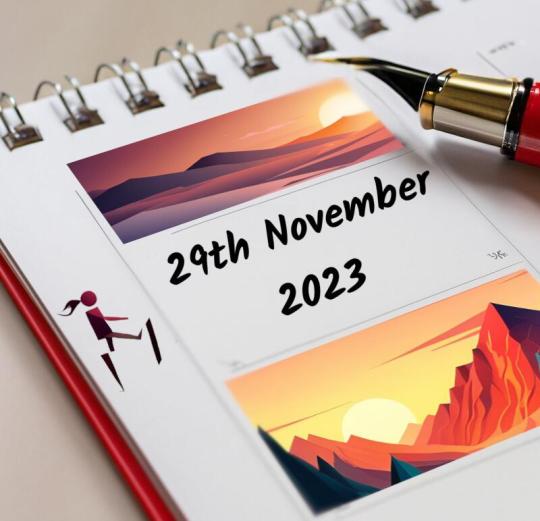
29th November 2022 🗓️ : Death - Derek Granger
Derek Granger, British film and television producer and screenwriter (b. 1921)
"Derek Granger (23 April 1921 – 29 November 2022) was a British film and television producer, and screenwriter. He worked on Brideshead Revisited, A Handful of Dust, and Where Angels Fear to Tread...."
29th November 2017 🗓️ : Death - Slobodan Praljak
Slobodan Praljak, Croatian general (b. 1945)
"Slobodan Praljak (Croatian pronunciation: [slobǒdan prǎːʎak]; 2 January 1945 – 29 November 2017) was a Bosnian Croat war general who served in the Croatian Army and the Croatian Defence Council, an army of the Croatian Republic of Herzeg-Bosnia, between 1992 and 1995. Praljak was found guilty of..."

Image licensed under CC BY 2.0? by Zoran Lesic
29th November 2013 🗓️ : Event - LAM Mozambique Airlines Flight 470
LAM Mozambique Airlines 470 crashes in the Bwabata National Park in a pilot mass murder-suicide, killing all 33 people on board.
"LAM Mozambique Airlines Flight 470 was a scheduled international passenger flight from Maputo, Mozambique, to Luanda, Angola. On 29 November 2013, the Embraer E190 twinjet operating the service crashed into the Bwabwata National Park in Namibia, halfway through its flight, killing all 27 passengers..."
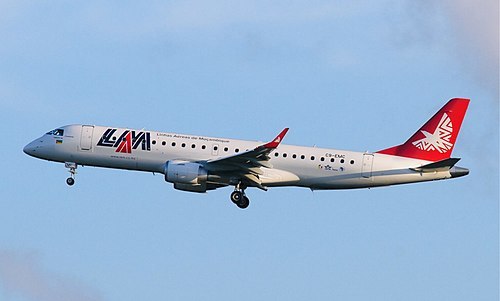
Image licensed under GFDL 1.2? by Sunil Gupta
29th November 1973 🗓️ : Birth - Fredrik Norrena
Fredrik Norrena, Finnish ice hockey player
"Fredrik Jan Elis Norrena (born November 29, 1973) is a Finnish former professional ice hockey goaltender. He played 100 games in the National Hockey League with the Columbus Blue Jackets between 2006 and 2008. The rest of his career, which lasted from 1992 to 2014, was mainly spent in Europe, where..."

Image licensed under CC BY 2.0? by Elliot from Castro Valley, California, USA
29th November 1923 🗓️ : Birth - Chuck Daigh
Chuck Daigh, American race car driver (b. 2008)
"Charles George Daigh (November 29, 1923 – April 29, 2008) was an American racing car driver. He broke into Grand Prix racing through Lance Reventlow's Scarab team, through the virtue of being one of the resident engineers. Born in Long Beach, California, he participated in six World Championship..."
29th November 1823 🗓️ : Birth - La Fayette Grover
La Fayette Grover, American lawyer and politician, 4th Governor of Oregon (d. 1911)
"La Fayette Grover (November 29, 1823 – May 10, 1911) was a Democratic politician and lawyer from the U.S. state of Oregon. He was the fourth Governor of Oregon, represented Oregon in the United States House of Representatives, and served one term in the United States Senate...."

Image by Mathew Benjamin Brady
29th November 🗓️ : Holiday - Christian feast day: Brendan of Birr
"Saint Brendan of Birr (died c. 572) was one of the early Irish monastic saints. He was a monk and later an abbot, of the 6th century. He is known as "St Brendan the Elder" to distinguish him from his contemporary and friend St Brendan the Navigator of Clonfert. He was one of the Twelve Apostles of..."

Image licensed under CC BY-SA 4.0? by Andreas F. Borchert
0 notes
Photo

Day 7 & 8: The Nambwa Tented Lodge is located along the Kwando River, deep in the Bwabwata National park of Namibia. The entire Lodge is built on 4-5 metre tall stilts. Why? Because it’s generally not a good idea to build anything that an elephant might consider an obstacle. (elephants don’t like obstacles) We went to bed with entire herds of elephants casually meandering under our rooms and woke up to baboons staring at us from outside or bedroom windows. It. Was. Incredible. #nambwatentedlodge #namibia #outandaboutafrica #elephants #africanelephants #baboons #sableantelope #greaterkudu (at Bwabwata National Park) https://www.instagram.com/p/ClIA6ooMmfA/?igshid=NGJjMDIxMWI=
#nambwatentedlodge#namibia#outandaboutafrica#elephants#africanelephants#baboons#sableantelope#greaterkudu
0 notes
Text
NAMIBIA 2: Story of Earth, Story of Us (Expedition #58)
GUIDES: Leon Chartrand, PhD (Lead)
ACTIVITIES: NOTE: In order to preserve the uniqueness of this experience and to protect rhinos, elephants, cheetah and other animals from our giving away their locations to poachers and tourists, specific details will only be given to the finalized roster and will not be listed here.
At Woltemade Farms (4 nights): nightly soccer matches, sun-downers, campfire meals, wildlife trekking, medicinal plants walk, game drives, sustainable farming methods, semi-precious stone mine, swimming, Sunset wildlife watch at the water hole.
Guest Lodge near Grootfontein (1 night), guided Cave Excursion, Sundowner.
Guest Camp on Kavango River (1 night), Mbuzu Village Visit, Sundowner
Undisclosed River Lodge along the Kavango River (3 nights): Two full days in Bwabwata and Mahangu National Parks for all-day wildlife safaris to see elephants, cape buffalo, zebra, giraffe, oryx, kudu, impala, springbok, wildebeest, jackal, lions. Sunset boat tour on Kavango River to fish for tiger fish and to see hippo, crocodiles and migrating birds. Okavangu Village Walk to learn how to cook a traditional meal.
Camp near Erongo (1 night): Sundowner and bushbaby and dik-dik trekking.
Undisclosed Wildlife Sanctuary and Orphanage (3 nights): lion-feedings, safaris to see hippo, elephant, giraffe, hosts of antelope, lion pride, SunDowners, visits to the Rhino Orphanage and to the local school.
FACULTY: Leon Chartrand, PhD; Steve Yandell, PhD; David Gerberry, PhD.
COURSES: 6 Total CORE Credits, with option to choose among two of three courses offered.
MATH 125 (Gerberry), 3 Credits, (CORE Math Perspectives, Free Elective). This is a course on the principles of modeling wildlife populations and wildlife habitat.
ENGL 205 (Yandell), 3 Credits, CORE PHIL 200, Humanities Elective, Free Elective
THEO 332 (Chartrand), 3 Credits, CORE THEO 200, ERS, Env Sci/Studies, Peace Studies, Humanities Elective, Free Elective
PROGRAM FEE: $4,390 includes roundtrip international airfare, all lodging, ground transportation, vehicle safaris, elephant/wildlife trekking, boat safaris, tiger fish excursions, Mbuzu and Kavango Village visits, National Parks visits, Rock Art tours, Lion-feeding, Rhino Orphanage, meals, snacks, beverages.
TUITION: $535/Credit Hour, 6 Total Credits (separate from Program Fee, 9 Credits are also possible)
DEPOSIT: $400 Nonrefundable deposit secures student’s spot. Deposit deducted from Program Fee.
LIMIT: Maximum 13 Students
VALUE: Attempting this program on one’s own would cost ~$13,500/person. For THIS expedition, a student’s total cost is $4,390 (Program Fee) + $3,210 (6 Credits Tuition) = $7,600 total. For questions on payment plans, contact Xavier University’s Office of the Bursar. For questions on grants and scholarships, contact Xavier University’s Office of Financial Aid.
0 notes
Text
Khoe-Kwadi: Khwe
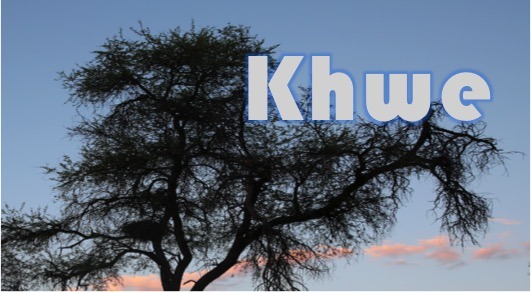
Part 3 of my Khoe-Kwadi series: Khwe
Family Overview
Kwadi
Khwe (or Khwedam)
Khwe is a dialect cluster belonging to the Kalahari Khoe subgroup of the Khoe-Kwadi family’s Khoe branch. According to the seminal Khoe classification by Vossen (1997), Khwe is most closely related to Naro and Gǀui-Gǁana, two Kalahari Khoe languages spoken in the Central Kalahari. However, more recent research suggests that Khwe may be closer to the geographically adjacent Kalahari Khoe languages Ts’ixa and Shua.
Where is it spoken?
Historically, Khwe speakers dwelt in a vast area reaching from southeastern Angola and western Zambia across the Namibian Caprivi strip into Botswana’s Okavango Delta. Only recent historical events like the civil war in Angola and the Namibian war of independence led to the present-day situation in which the majority of the 7,000–8,000 remaining speakers reside in the Bwabwata National Park of Namibia and along the Okavango panhandle in northwestern Botswana. Work-related migration, resettlement schemes and the establishment of National Parks during the second half of the 20th century further contributed to Khwe speakers abandoning their traditional settlements in favor of bigger villages close to the roadside.
(Map taken from Fehn 2019)
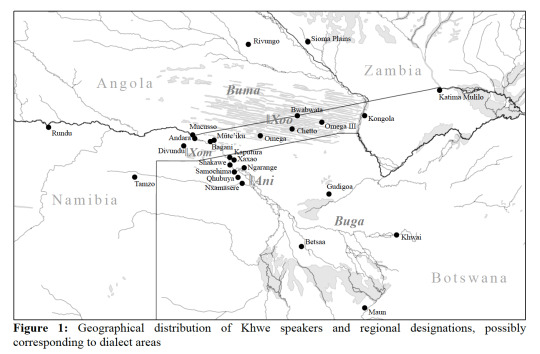
Where does the term “Khwe” come from?
The orthographic spelling “Khwe” derives from the root *khoe ‘person’, which is shared by all Khoe languages and ultimately gave its name to the language family. The Kwadi branch of the Khoe-Kwadi family has *kho ‘person’, suggesting that the -e ending is a suffix, possibly the common gender plural suffix -(ʔ)e still retained in Kwadi. To distinguish the Khwe dialect cluster from the Khoe language family, it was first spelt <Kxoe> by the linguist Oswin Köhler, and later - in agreement with the community - <Khwe>.
Are there dialects of Khwe?
There are two main subgroups within the Khwe cluster: Khwe “proper” and ǁAni. Due to the current sociolinguistic situation which favors dialect leveling, the dialectal diversity within Khwe may be underestimated by most scholars studying the language. Within Khwe “proper”, at least three varieties (ǁXom, ǁXoo and Buga) can be distinguished by phonological, lexical, and possibly also structural isoglosses. It has also been suggested that there are two sub-branches of ǁAni, a western and an eastern variety. We know very little about the Khwe variants spoken in Angola before the war, but some word lists recorded by the South African scholar E.O.J. Westphal suggest that they may have been phonologically and lexically distinct from the well-studied variety now predominant in the West Caprivi (ǁXom).
What does it sound like?
Different Khwe varieties have different phoneme inventories. Here’s a comparison of three varieties for which sufficient data is available (ǁXom, Buga and ǁAni):
(Tables taken from Fehn 2019)
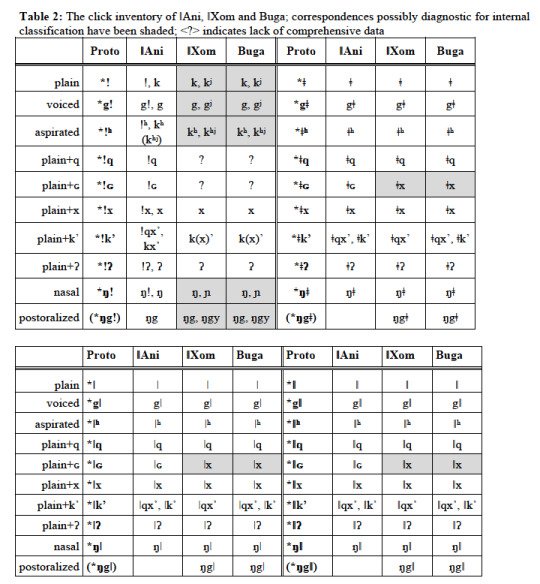
While ǁXom and Buga have lost the alveolar click and replaced it by a velar or palatal stop (safe for some relic forms), ǁAni retains most of its alveolar clicks.
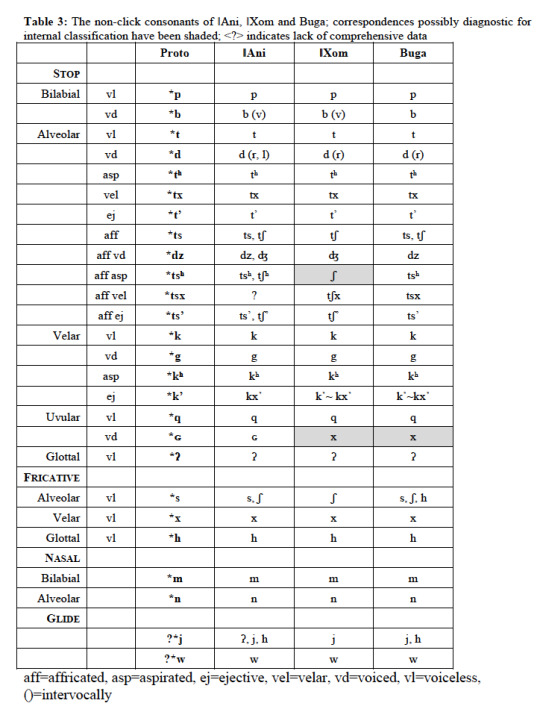
Although the phoneme inventory of Khwe is fairly large from a cross-linguistic perspective, it is smaller than that of Kalahari Khoe languages spoken in and around the Central Kalahari (Gǀui-Gǁana, and Naro), and substantially smaller than the phoneme inventories found in the southern African click-language families Kx’a and Tuu.
Typological features
In Khwe, the basic word order is SOV, but pragmatic considerations allow for both SVO and OSV. The basic constituent order in the noun phrase is head-final. Nouns in Khwe are optionally marked by portmanteau morphemes encoding person, gender and number (PGN). These clitics serve the function of specific articles and attach to about 75% of the language’s noun phrases. Like other Khoe languages, Khwe has a rich suffixing morphology: Derivational suffixes attach to both verbs and nouns, and a subset of the language’s tense-aspect morphemes is linked to the verb stem via a so-called juncture morpheme. Khwe distinguishes between two juncture morphemes triggering different morpho-tonological processes, one for NON-PAST and one for PAST. Khwe has nine suffixes marking tense-aspect, four in the domain of non-past, and five past-tense markers.
The direct object may optionally be marked by the postposition ʔà, which interacts with the argument’s information-structural properties. Oblique (peripheral) participants are obligatorily marked by a set of semantically specified postpositions. Khwe distinguishes between four syntactic verb classes, according to the number of core participants they may take: intransitives, transitives, ditransitives, and S/O-ambitransitives. Predicates may be simple or complex. Complex predicates display semantic features similar to serial verb constructions and involve two or more verbs, which are connected by the juncture morpheme.
Literature (just a small selection - there is lots of published literature on Khwe)
Brenzinger, Matthias. 1998. Moving to survive: Kxoe communities in arid lands. In Mathias Schladt (ed.), Language, identity, and conceptualization among the Khoisan, 321–357. Cologne: Rüdiger Köppe.
Fehn, Anne-Maria. 2019. Phonological and Lexical Variation in the Khwe Dialect Cluster. Zeitschrift der Deutschen Morgenländischen Gesellschaft 169(1): 9–39.
Heine, Bernd. 1999. The ǁAni: Grammatical notes and texts. Cologne.
Kilian-Hatz, Christa. 2003. Khwe Dictionary with a supplement on Khwe place-names of West Caprivi by Matthias Brenzinger (Namibian African Studies, 7). Cologne: Rüdiger Köppe.
Kilian-Hatz, Christa. 2008. A grammar of modern Khwe (Central Khoisan) (Research in Khoisan Studies, 23). Cologne: Rüdiger Köppe.
Köhler, Oswin. 1981. La langue kxoe. In Jean Perrot (ed.), Les langues dans le monde ancien et moderne, première partie: Les langues de l’afrique subsaharienne, 483–555. Paris: Centre National de la Recherche Scientifique.
Schladt, Mathias. 2000. A Multi-Purpose Orthography for Kxoe: Development and challenges. In Herman M. Batibo & Joseph Tsonope (eds.), The State of Khoesan Languages in Botswana, 125–139. Gaborone: Tasalls.
Vossen, Rainer. 1997. Die Khoe-Sprachen: Ein Beitrag zur Erforschung der Sprachgeschichte Afrikas (Research in Khoisan Studies, 12. Vol. 12. Cologne: Rüdiger Köppe.
Vossen, Rainer. 2000. Khoisan languages with a grammatical sketch of ǁAni (Khoe). In P. Zima (ed.), Areal and Genetic Factors in Language Classification and Description: Africa South of the Sahara, 129-145. Munich. Lincom.
18 notes
·
View notes
Text
Tra l’Angola e il Botswana, una sottilissima striscia di terra appartenente alla Namibia si allunga fino a raggiungere il punto in cui il fiume Kwando, che segna il confine con il Botswana, si getta nello Zambezi, che la separa dall’Angola, a pochi chilometri dal confine con lo Zimbabwe. Una lingua di territorio lunga 450 chilometri e spessa solo 30, insanguinata per tutta la seconda metà degli anni Novanta dallo scontro tra il governo namibiano e i separatisti della Caprivi Liberation Army. Dopo anni di atrocità, distruzione delle sue ricchezze naturali e bracconaggio, gli animali stanno tornando a popolare i parchi del Caprivi, insieme a qualche turista. Noi l’abbiamo percorsa da est a ovest, attraversando i parchi naturali ancora poco frequentati dagli stranieri e tagliati dalla statale B8, che collega Katima Mulilo a Rundu.
Un viaggio in autobus durato un’intera giornata ci ha portati da Victoria Falls a Katima, attraverso la regione settentrionale del Botswana. Più di otto ore, tra controlli sanitari, disinfezione delle suole delle scarpe e acquisizione di impronte digitali a ogni confine.
Katima Mulilo è la prima città che si incontra entrando in Namibia dal Botswana settentrionale: un avamposto di circa 30.000 abitanti, la città più lontana dalla capitale Windhoek. Qui è dove abbiamo ritirato la nostra auto a noleggio, una piccola Toyota Etios che ci ha accompagnati fino a Cape Town. Lungo la strada principale di Katima, si possono acquistare generi di prima necessità e il carburante necessario per proseguire fino a Rundu. Dopo le 18, gli unici luoghi per mangiare qualcosa sono i negozi dei distributori di benzina o i fast food annessi. Impossibile però pagare in dollari o con carta di credito straniera: essendo riusciti a cambiare circa 5 dollari in moneta locale grazie alla gentilezza della gerente della guest-house dove abbiamo alloggiato, siamo riusciti ad acquistare da bere e qualche snack per dormire a pancia piena.
Riposati e rifocillati, la mattina del nostro primo giorno in Namibia siamo partiti in direzione ovest. Nel giro di pochi chilometri, ci stiamo ritrovati da soli lungo la statale B8, un parco nazionale dietro l’altro, tra elefanti che ci hanno attraversato la strada e villaggi di capanne apparentemente disabitati.
Le nuvole di sabbia sollevate dai branchi di pachidermi, la boscaglia secca ai lati della strada e i rari alberi verdi, sinonimo di acqua nel sottosuolo, sono uno spettacolo che rivedo davanti a me chiudendo gli occhi. Seguiamo la C49 e poi la B8, attraversando il Wuparo Conservancy ed entrando nel Mudumu National Park, una delle aree più ricche di fauna fino agli anni Ottanta, quando divenne una concessione di caccia non ufficiale e gli animali furono decimati.
All’interno del parco di può visitare il bellissimo villaggio-museo di Lizauli, fondato a poca distanza dall’abitato per far conoscere ai viaggiatori gli stili di vita tradizionali del Caprivi. Le guide locali forniscono informazioni sull’alimentazione, i metodi di pesca, caccia e allevamento, l’organizzazione sociale e politica dei villaggi, l’artigianato, la medicina tradizionale, i giochi e la musica. E’ stata l’occasione perfetta per toccare con mano le usanze di una delle tante tribù namibiane, dagli stili di vita estremamente diversi l’una dall’altra.
I Kaprivian sono circa 80.000, divisi in cinque tribù: i Lozi, i Mafwe, i Subia, gli Yei e i Mbukushu. Agricoltura di sussistenza, pesca e allevamento di bestiame ne garantiscono la sopravvivenza. La lingua franca di questi popoli è un idioma derivato dal lozi, tribù che controllava tutta l’area fino al XIX secolo. Grazie proprio alla visita guidata al museo abbiamo scoperto che per allontanare gli animali feroci utilizzano una frusta che, picchiata a terra, produce un suono simile ad uno sparo. Una sorta di slitta in legno trainata da buoi è usata per i trasporti, mentre per proteggere il cibo conservato in ampie ceste costruiscono trappole per topi con la terra dei termitai e per difendere i polli dai predatori, durante la notte, li chiudono in piccole gabbie rialzate. La calabash, in italiano “zucca a fiasco”, è il recipiente usato per il trasporto dell’acqua e per la conservazione del latte, che al suo interno è fatto diventare acido, per poi impiegarlo nella preparazione del porridge. La musica dello xilofono è tipica delle grandi festività, quando tutto il villaggio partecipa alle celebrazioni e si cucinano cibi in grande quantità. Si mescola ai canti e al suono prodotto dalle gonne fatte in legno delle danzatrici.
Parte del progetto del museo è anche la vendita di prodotti artigianali, i cui proventi contribuiscono al sostentamento della comunità e alla tutela della fauna contro il bracconaggio, una piaga che ha afflitto (e ancora oggi continua) tutti i parchi della regione.
E’ solo dopo il cessate il fuoco del 2002 che il Bwabwata è stato dichiarato parco nazionale e i bracconieri non hanno più potuto sfruttare liberamente le risorse di quest’area. La Mahango Game Reserve, una riserva naturale che occupa solo 25 chilometri quadrati di superficie, è un paradiso per gli amanti della savana e degli animali. Senza la necessità di disporre di un fuoristrada, la si può visitare con calma in mezza giornata: il Circular Drive Loop è lungo 20 chilometri e permette di osservare facilmente la ricchissima fauna selvatica.
This slideshow requires JavaScript.
Nei pressi di Bagani il fiume Okavango forma una serie di piccole cascate: le Popa Falls, poco più che delle rapide, soprattutto dopo aver assistito allo spettacolo delle Victoria Falls. Un’occasione però per avvistare i coccodrilli che popolano le acque del fiume.
La notte trascorsa sulle sponde dell’Okavango è stata una delle più particolari e allo stesso tempo stancanti che abbia vissuto. Le piazzole del Ngepi Camp si trovano proprio sulle sponde del fiume, pochi metri più in alto di dove sguazzano gli ippopotami. Si è immersi nel bush, i bagni solo all’aria aperta e alle 22 l’elettricità smette di esistere anche nella zona del bar. Ci si riconcilia con i suoni della natura, che tra barriti di elefanti e ruggiti di ippopotami è riuscita anche a farmi temere per qualche ora (esagerando, se ci ripenso) che avremmo potuto morire schiacciati dai pachidermi e nessuno l’avrebbe saputo per molto tempo, dato che anche le comunicazioni sono state pressoché impossibile nei giorni trascorsi nel Kaprivi.
Ma, a ripensarci, è stata un’esperienza preziosa, forse sarà l’unica della mia vita. Svegliarsi all’alba con il canto degli uccelli (anche i grandi animali a una certa ora erano andati a dormire e mi avevano lasciata assopire) e vedere il fiume Okavango, non ha prezzo!
• Welcome to paradise •
Informazioni pratiche:
I parchi e le riserve sono generalmente aperte dall’alba al tramonto. All’ingresso e all’uscita, è necessario registrare i propri dati e pagare una piccola somma di denaro.
Il villaggio-museo di Lizauli non ha orari fissi. Per raggiungerlo, però, si passa davanti all’abitato: quando le guide vedono sopraggiungere dei viaggiatori, arrivano letteralmente di corsa ad accogliervi. Il prezzo dell’ingresso è pari a 40 NAD e i prodotti artigianali in vendita sono splendidi, anche se leggermente più cari che in altre aree, ma sono con certezza costruiti al villaggio e non importati. Inoltre, trovare altri negozi dove acquistare i manufatti tipici del Caprivi è molto difficile: lasciando la regione anche l’artigianato cambia foggia e di villaggi dove “fare shopping” non ce ne sono lungo la strada.
Per raggiungere le Popa Falls è necessario accedere al Popa Falls Resort e pagare il biglietto d’ingresso.
Per avere più informazioni sul camping: http://www.ngepicamp.com. Sulle sponde del fiume, comunque, ce ne sono una decina tra cui scegliere, compresi lodge di lusso.
Caprivi Strip: la rinascita di una ragione contesa Tra l'Angola e il Botswana, una sottilissima striscia di terra appartenente alla Namibia si allunga fino a raggiungere il punto in cui il fiume Kwando, che segna il confine con il Botswana, si getta nello Zambezi, che la separa dall'Angola, a pochi chilometri dal confine con lo Zimbabwe.
#Africa#Caprivi Strip#Katima Mulilo#Lizauli Traditional Village#Mahango Game Reserve#Namibia#National Parks#Ngepi Camp#People#Photography#Popa Falls#Safari#Savana
2 notes
·
View notes
Video
Elephants by Will Burrard-Lucas
Via Flickr:
Elephants at the end of another day in Bwabwata National Park, Namibia.
77 notes
·
View notes
Video
youtube
Ndhovu Safari Lodge is located around 20 km south of Divundu Bridge along road C 48, just after the Popa Falls in Namibia. It is a peaceful riverine retreat situated on the western banks of the Okavango River, overlooking the well-known Bwabwata Game Park. In true safari tradition, Ndhovu offers luxury tented accommodation, each tent being fully equipped with its own en-suite bathroom facilities. The charming thatched lapa overlooks the banks of the river, where elephants and hippo sometimes congregate, providing residents outstanding game and bird-viewing opportunities whilst enjoying sundowners at the bar and delicious buffet meals. Facilities offered at the lodge include boat trips, fishing excursions and game drives whilst the birdlife in the area will satisfy the most ardent bird-watcher - over 400 different species have been recorded in the surroundings. The Mahango Game Reserve is a mere 2 km away, offering excellent opportunities to view elephant, buffalo, red lechwe and sable antelope, to name a few, in typical riverine and swampland habitat.
---------------------------------------
Die Ndhovu Safari Lodge liegt etwa 20 km südlich der Divundu Bridge an der Straße C 48, gleich nach den Popa Falls in Namibia. Es ist ein friedlicher Platz am westlichen Flußufer des Okavango River mit Blick auf den bekannten Bwabwata Game Park. In wahrer Safari-Tradition bietet Ndhovu Zeltunterkünfte, wobei jedes Zelt komplett mit einem eigenen Bad ausgestattet ist. Die charmante strohgedeckte Lapa überblickt beide Seiten des Flusses, wo sich manchmal Elefanten und Flusspferde versammeln. Sie bietet den Gästen hervorragende Möglichkeiten zur Wild- und Vogelbeobachtung, während sie Sundowner an der Bar genießen. Zu den in der Lodge angebotenen Aktivitäten zählen Bootsfahrten, Angeltouren und Pirschfahrten, zudem die Vogelwelt in der Umgebung auch den leidenschaftlichsten Vogelbeobachter zufriedenstellt - in der Umgebung wurden über 400 verschiedene Arten registriert. Das Mahango Game Reserve ist nur 2 km entfernt und bietet hervorragende Möglichkeiten, Elefanten, Büffel, rote Lechwe und Rappenantilopen, um nur einige zu nennen, in typischen Fluss- und Sumpflandgebieten zu beobachten.
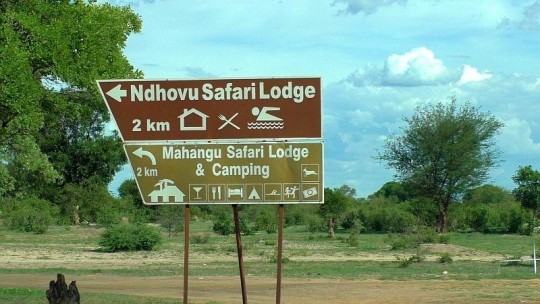




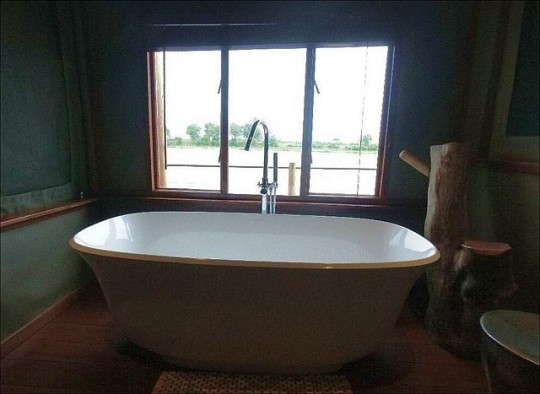



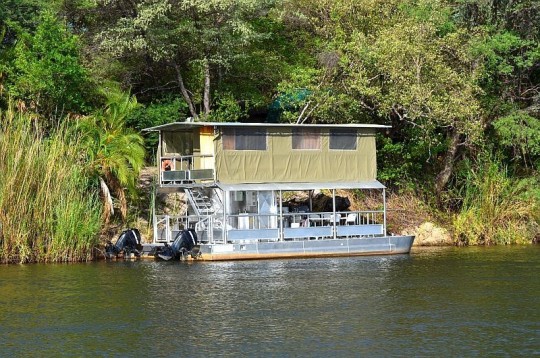
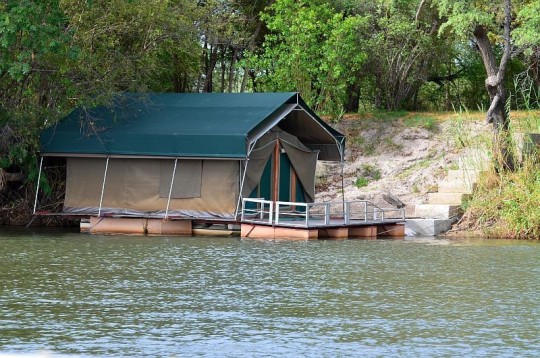
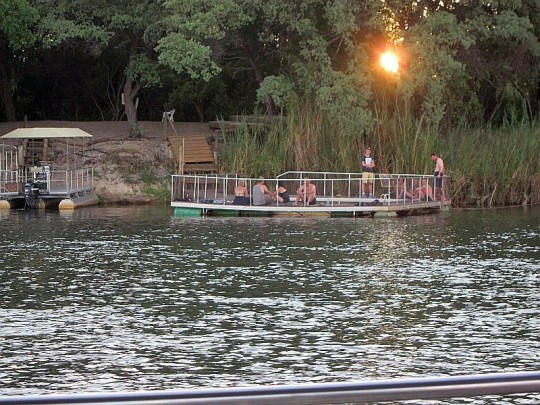
#Ndhovu Safari Lodge#Divundu#Bwabwata National Park#Mahango Game Park#Bwabwata#Mahango#Okavango#Caprivi#Caprivi Streifen#caprivi stripe#Namibia#Afrika#Africa
2 notes
·
View notes
Photo

Roan antelope feature continued (3/3)... ~ My personal experiences with roan antelope across Africa: ~ This particular subspecies is H. e. cottoni, one of six subsp. I have seen roan only in a few locations in all my travels, including in Moremi GR, Botswana 🇧🇼(these photos); in Busanga Plains, the northern private section of Kafue NP in Zambia 🇿🇲 where I also saw sable in the same area; I think maybe Kasanka NP, also in Zambia; and in Namibia’s 🇳🇦 Khaudum Game Reserve, southwest of The Caprivi Strip, Bwabwata NP. ~ I have a grand total of only 36 photos of roan, most of them taken on one of my RAW Safaris last October, 2019, in Botswana. ~ It's really a rare treat when you see them! ~ For more info visit www.raw-worldwide.com . . . . . #antelope #antelopes #roan #roanantelope #roanhorse #roanokeoutside #roanmountain #minimalistphotographer #breakfreewitholympus #olympusphotography #olympusomd #getolympus #olympusau #olympusaustralia #natgeoyourshots #natgeoyourshot #wildlifephotographers #wildlifephotographs #ecologylife #wildlifeecology #nature_perfection #ecologytours #africananimal #africananimals #africanwildlife #africanwildlifephotography #africanwildlifefoundation #fgasa #wildlifefacts #wildlifemonitoring (at Kruger National Park) https://www.instagram.com/p/CAY3u3mFrcE/?igshid=1q2571yx6ke3x
#antelope#antelopes#roan#roanantelope#roanhorse#roanokeoutside#roanmountain#minimalistphotographer#breakfreewitholympus#olympusphotography#olympusomd#getolympus#olympusau#olympusaustralia#natgeoyourshots#natgeoyourshot#wildlifephotographers#wildlifephotographs#ecologylife#wildlifeecology#nature_perfection#ecologytours#africananimal#africananimals#africanwildlife#africanwildlifephotography#africanwildlifefoundation#fgasa#wildlifefacts#wildlifemonitoring
0 notes
Photo

By Jacqueline Howard, CNN
April 10, 2019
Anthrax through history
U.S. soldiers in Kuwait in 1998 are vaccinated against anthrax, one of the germ warfare agents suspected to be in Iraq's arsenal of banned weapons of mass destruction.
Anthrax was sent via anonymous letters to news agencies in Florida and New York and a congressional office building in Washington after the September 11, 2001, attacks. Five people were killed, including two postal workers, and 17 people sickened. No arrests were ever made.
Vado Diomande, a New York drum-maker, was diagnosed with inhalation anthrax in 2006 after processing goat skins he'd picked up in Africa. Here, a NYPD hazmat team prepares to enter his apartment.
A Connecticut woman developed gastrointestinal anthrax in 2009 after attending an event where contaminated drums were played. In 2010, an outbreak among heroin users in Northern Europe led doctors to diagnose a new type: injection anthrax.
In June 2015, the Pentagon announced that the Defense Department may have accidentally shipped live anthrax samples to 86 labs in 20 states, the District of Columbia and seven foreign countries. There were no infections as a result of the shipments. Cmdr. Franca Jones, director of medical programs for chemical and biological defense, demonstrates the protocol for shipping anthrax samples.
In July, thirteen people were hospitalized amid an outbreak of anthrax in western Siberia. Experts with the Russian Ministry of Agriculture believe the cause of infection was the thawing of the frozen carcass of a reindeer that died 75 years ago.
Photos: Anthrax through historyAnthrax, an acute infectious disease, has three main types: cutaneous (through the skin), inhalation (through the lungs, the most deadly) and gastrointestinal (through digestion). Scholars believe that anthrax originated in Egypt and Mesopotamia. Some even blame it for the biblical fifth plague of ancient Egypt, a sickness affecting horses, cattle, sheep and camels. The contagion was also a familiar one in ancient Greece and Rome.Hide Caption1 of 10
In the late 19th century, German scientist Robert Koch discovered that Bacillus anthracis, the bacterium that causes anthrax, formed spores that were able to survive for very long periods of time in many different environments. After growing the bacteria and injecting it into animals, he described a novel concept: that a specific microbe could cause a specific disease.
The first anthrax vaccine is alternately credited to Koch's French contemporaries Louis Pasteur, seen here, and Jean Joseph Henri Toussaint.
The development of a live spore vaccine to protect animals from anthrax led to a dramatic decline in human cases: only 18 cases of inhalation anthrax in the 20th century, the Centers for Disease Control and Prevention says. The first human vaccine was created in the 1950s, and penicillin quickly became the preferred treatment for those who caught the illness.
Here, assistants in a bacteriology production unit prepare batches of anthrax for experimental research in May 1964.
Anthrax emerged as a biological weapon in Europe in World War I. Japan began producing the bacteria for use as a weapon in the 1930s. The United States experimented with biologic agents such as anthrax during World War II, and the United Kingdom held field trials of anthrax-laden munitions on a small Scottish island called Gruinard. The island was then sealed off to the public for almost 45 years.
U.S. soldiers in Kuwait in 1998 are vaccinated against anthrax, one of the germ warfare agents suspected to be in Iraq's arsenal of banned weapons of mass destruction.
Anthrax was sent via anonymous letters to news agencies in Florida and New York and a congressional office building in Washington after the September 11, 2001, attacks. Five people were killed, including two postal workers, and 17 people sickened. No arrests were ever made.Hide Caption7 of 10
Photos: Anthrax through historyVado Diomande, a New York drum-maker, was diagnosed with inhalation anthrax in 2006 after processing goat skins he'd picked up in Africa. Here, a NYPD hazmat team prepares to enter his apartment.
A Connecticut woman developed gastrointestinal anthrax in 2009 after attending an event where contaminated drums were played. In 2010, an outbreak among heroin users in Northern Europe led doctors to diagnose a new type: injection anthrax.
In June 2015, the Pentagon announced that the Defense Department may have accidentally shipped live anthrax samples to 86 labs in 20 states, the District of Columbia and seven foreign countries. There were no infections as a result of the shipments. Cmdr. Franca Jones, director of medical programs for chemical and biological defense, demonstrates the protocol for shipping anthrax samples.
Photos: Anthrax through historyIn July, thirteen people were hospitalized amid an outbreak of anthrax in western Siberia. Experts with the Russian Ministry of Agriculture believe the cause of infection was the thawing of the frozen carcass of a reindeer that died 75 years ago.Hide Caption10 of 10
Anthrax, an acute infectious disease, has three main types: cutaneous (through the skin), inhalation (through the lungs, the most deadly) and gastrointestinal (through digestion). Scholars believe that anthrax originated in Egypt and Mesopotamia. Some even blame it for the biblical fifth plague of ancient Egypt, a sickness affecting horses, cattle, sheep and camels. The contagion was also a familiar one in ancient Greece and Rome.
In the late 19th century, German scientist Robert Koch discovered that Bacillus anthracis, the bacterium that causes anthrax, formed spores that were able to survive for very long periods of time in many different environments. After growing the bacteria and injecting it into animals, he described a novel concept: that a specific microbe could cause a specific disease.
The first anthrax vaccine is alternately credited to Koch's French contemporaries Louis Pasteur, seen here, and Jean Joseph Henri Toussaint.
The development of a live spore vaccine to protect animals from anthrax led to a dramatic decline in human cases: only 18 cases of inhalation anthrax in the 20th century, the Centers for Disease Control and Prevention says. The first human vaccine was created in the 1950s, and penicillin quickly became the preferred treatment for those who caught the illness.
Here, assistants in a bacteriology production unit prepare batches of anthrax for experimental research in May 1964.
Anthrax emerged as a biological weapon in Europe in World War I. Japan began producing the bacteria for use as a weapon in the 1930s. The United States experimented with biologic agents such as anthrax during World War II, and the United Kingdom held field trials of anthrax-laden munitions on a small Scottish island called Gruinard. The island was then sealed off to the public for almost 45 years.
A suspected anthrax outbreak is raising alarm at Lake Nakuru National Park in Kenya after the sudden deaths of 10 buffalo since last month, and officials are working to make sure the outbreak doesn't put humans at risk.
Are we at risk for an anthrax attack?
Anthrax outbreaks in wildlife and livestock often stir concern because the disease can spread to humans who might come in contact with an infected animal or eat meat or drink milk from an infected animal.In people, anthrax can be fatal if left untreated, and symptoms depend on the type of infection, such as small blisters for cutaneous anthrax; fever and chills for inhalation anthrax; or sore throat and nausea for gastrointestinal anthrax.
"Visitors to our park are at no risk if they observe park rules on avoiding contact with wild animals and we encourage them to continue with their tours," Susan Koech,principal secretary of Kenya's State Department of Wildlife, said in a news release
Monday.The first case in the outbreak was confirmed to be anthrax last week; the death was reported March 29, according to the release.The release also noted that the outbreak has been contained and officials are monitoring the situation. A team of veterinarians and park rangers is vaccinating animals to prevent further spread of the disease. The park lost buffalo and rhinos in 2015 in a similar anthrax outbreak.Sporadic cases of anthrax occur in animals worldwide, and there are occasional outbreaks in Africa and central Asia, according to the
World Health Organization
. Before the use of veterinary vaccines, anthrax was a major cause of deadly disease in livestock such as cattle, sheep, goats, camels, horses and pigs throughout the world.
"Having contact with animals that have died from anthrax is actually the most common route for humans to become infected with anthrax," said Caitlin Cossaboom, an epidemic intelligence service officer in the Bacterial Special Pathogens Branch at the US Centers for Disease Control and Prevention."Anthrax is difficult to control, and outbreaks can be very difficult to predict," she said. "A seasonal pattern of anthrax outbreaks has actually been described, particularly related to cycles of heavy rainfall that are followed by periods of drought when it's very dry and hot."One massive anthrax outbreak among wildlife in Namibia killed more than 200 hippopotamuses and Cape buffalo between September and December 2017, putting people and livestock at huge risk of becoming infected.In that case, even though more than 1,000 people were identified as having contact with or consuming meat from animals involved in the outbreak, there were no reported human cases or deaths.The details about how humans were protected in the outbreak are shared in a paper led by Cossaboom and published in the journal Emerging Infectious Diseases on Wednesday.The key to keeping anthrax away from humansDozens of hippopotamus and Cape buffalo carcasses were found along the Kavango River in Bwabwata National Park in Namibia in fall 2017, the first eerie evidence of that anthrax outbreak.Namibia's Ministry of Environment and Tourism, the Ministry of Health and Social Services and the Ministry of Agriculture, Water and Forestry worked together to contain the outbreak. The CDC also helped the Namibian ministries.The CDC worked closely with Namibia to collect specimens from affected wildlife carcasses for use with the newly developed Active Anthrax Detect Rapid Test. The paper described this use of the test in the field as "successful."
How prepared is the US for an anthrax attack?
Namibia's Ministry of Health and Social Services developed and administered a questionnaire to identify people living in communities adjacent to Bwabwata National Park who were exposed to the carcasses.Through the questionnaire, 1,050 people were identified as having contact with or consuming meat from the carcasses, according to the paper. They were immediately provided with post-exposure prophylactic antibiotics.Meanwhile, the Ministry of Agriculture, Water and Forestry secured about 10,000 doses of livestock anthrax vaccine and administered the vaccines to prevent spillover of anthrax from wildlife to susceptible domestic animals -- and subsequently to humans."Anthrax is only one of many, many diseases that are zoonotic, meaning they can be spread between animals and humans," Cossaboom said. "Some examples of this include rabies, which can be spread through bites from infected animals to humans, and rabies, also like anthrax, can be controlled by controlling it in animals."As prevention efforts were employed, the Ministry of Environment and Tourism started removing all of the dead animal carcasses from the Bwabwata National Park."The response in this outbreak -- including rapidly identifying people that had been exposed to the dead animals, providing them with antibiotics post-exposure and then starting the community engagement to raise awareness on what was going on -- was so critical," Cossaboom said."All of those actions together -- or this really rapid multisectorial response -- was the key to having a successful outcome," she said. "Fortunately, because of all of those efforts and the rapid response, there were no human cases, despite over 1,000 people being exposed in this case."'Human risk always exists'The paper shows how a fast-acting multidisciplinary approach can prevent an outbreak in wildlife from becoming an outbreak in humans, said Dr. Amesh Adalja, a senior scholar at the Johns Hopkins Center for Health Security and member of the Infectious Diseases Society of America, who was not involved in the research. "Human risk always exists with anthrax outbreaks in animals," Adalja wrote in an email.
"Anthrax is a zoonotic disease with human cases often tied to animal exposure. For example, multiple cases have occurred at African drumming events when individuals were exposed to animal drum skins that contained anthrax spores," he said."Because of the risk of spillover into humans, it is crucial to monitor animal anthrax outbreaks and delimit the exposure of humans while promptly administering post-exposure antibiotics to those exposed. It is also important to emphasize Anthrax is a major biowarfare threat and being prepared for outbreaks of animal origin directly enhances abilities to respond to a potential bioattack using anthrax."
0 notes
Video
youtube
More than 100 hippos dead in Bwabwata National Park - NBC
:/ :( 09.10.2017, 17:41
Namibie: plus de 100 hippopotames retrouvés morts dans une rivière d'un parc national
ANIMAUX - Plus de 100 hippopotames ont été retrouvés mort dans une rivière dans un parc national, en Namibie. Ils pourraient avoir succombé à la maladie du charbon.
Une centaine d'hippopotames ont été retrouvés morts dans une rivière d'un parc national en Namibie. Cette hécatombe aurait pu être causée par la maladie du charbon, a annoncé lundi le ministère de l'Environnement.
Sur des photos publiées dans la presse locale, des cadavres d'hippopotames gisent sur le dos ou la tête au-dessus de l'eau dans le parc de Bwabwata (nord-est). "Plus de cent hippopotames sont morts la semaine dernière. On ne connaît pas l'origine des décès mais on soupçonne qu'il s'agit de la maladie du charbon", a déclaré le ministre namibien de l'Environnement, Pohamba Shifeta.
Le bilan pourrait encore être plus élevé, a estimé le ministre. Il a avancé l'hypothèse que des carcasses d'hippopotames avaient déjà été dévorées par des crocodiles.
"Nos services vétérinaires sont sur place pour tenter de déterminer la cause des décès. Une fois qu'on aura les résultats, on pourra prendre des mesures" appropriées, a ajouté le ministre.
La Namibie, pays d'Afrique australe prisé des touristes pour sa faune et ses dunes, compte quelque 1300 hippopotames.
La maladie du charbon, est une infection aiguë qui touche aussi bien l'animal que l'homme. La bactérie (Bacillus anthracis) est aussi considérée comme une arme bactériologique. La maladie est généralement transmise à l'homme par des animaux infectés ou par des produits animaux contaminés. Elle a récemment décimé sans bruit les chimpanzés vivant en forêt tropicale dans un parc national de Côte d'Ivoire.
0 notes
Quote
ナミビア北東部のブワブワータ国立公園(Bwabwata National Park)で、100頭以上のカバが死んでいるのが見つかった。ポハンバ・シフェタ(Pohamba Shifeta)環境相が9日、明らかにした。死因は炭疽(たんそ)だった可能性があるという。
同国立公園で撮影された画像には、仰向けに倒れたり、よどんだ水から頭だけ出したりしているカバの死骸が多数写されている。
シフェタ環境相はAFP記者に対し、「ここ1週間で100頭以上のカバが死んだ。死因は不明だが、炭疽の可能性を示す兆候がみられる」と説明。死骸がワニに食べられた可能性もあり、死んだカバの数はさらに多いかもしれないと述べた。
炭疽は炭疽菌への感染により発症する病気で、アフリカのサバンナ地帯など乾燥した地域で主に発生し、猟獣や家畜、時には人間も死に至らしめることがある。
ナミビア政府当局の推定によると、同国内に生息するカバの数は、今回の大量死発生以前でおよそ1300頭だった。(c)AFP
ナミビアで炭疽発生か カバ100頭以上死ぬ 写真1枚 国際ニュース:AFPBB News
0 notes